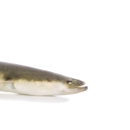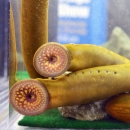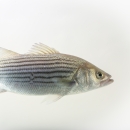Fisheries management, Monitoring
Connecticut River Basin Fishway Passage Counts
(Data as of 10/30/2024)
States
Connecticut, Massachusetts, VermontThis report is compiled by the U.S. Fish and Wildlife Service, CT River Fish and Wildlife Conservation Office using fishway count data provided by several agencies as well as power companies and is dependent in most cases on the review of video counts, that have an associated time lag for updates. Please visit http://www.fws.gov/r5crc for more information.
| Fishway, River - State | Data as of | American shad | Alewife | Blueback herring | Atlantic salmon | American eel | Sea lamprey | Striped bass | Gizzard shad | Shortnose sturgeon | Other/ comment |
|---|---|---|---|---|---|---|---|---|---|---|---|
| Rogers Lake-CT | 5/28 | 13,545 | Mary Steube passed | ||||||||
| Mary Steube, Mill-CT
| 5/28 | 27,415 | |||||||||
| Mill Pond, Falls-CT (NEW Fishway) | 5/28 | 500 | |||||||||
| Moulson Pond, Eightmile-CT | 5/28 | 6 | 1 | 30 | |||||||
| Leesville, Salmon-CT | open | 453 | SL based nest counts | ||||||||
| StanChem, Mattabesset-CT | final | 642 | 4 | ||||||||
| *Rainbow, Farmington-CT | closed | will not be operated* | |||||||||
| W. Springfield, Westfield-MA | 6/21 | 4,516 | 2,801 | 582 white suckers | |||||||
| Holyoke, Connecticut-MA | 10/18 | 433,009 | 723 | 18,322 | 53,616 | 442 | 73 | 28 | |||
| Easthampton, Manhan-MA | open | passing sea lamprey | |||||||||
| **Turners Falls-Gatehouse, Connecticut-MA | 10/18 | 71,309 | 21,219 | ||||||||
| Vernon, Connecticut-VT | 6/8 | 47,348 | 10,212 | ||||||||
| Bellows Falls, Connecticut-VT | na | was operated thru mid July | |||||||||
Total to basin, only first barrier counts | 437,525 | 28,063 | 728 | 0 | 18,322 | 56,900 | 442 | 73 | 28 | ||
| Last year totals (2023) | 279,840 | 8,026 | 2,228 | 0 | 11,039*** | 22,681 | 116 | 60 | 64 | ||
** Spillway Fish Ladder - 33,370 shad and 15,369 sea lamprey; Cabot Station Ladder, base of canal, 33,275 shad and 9,345 sea lamprey - NOTE not Final. Note that at Turners Falls Project (Dam/Canal) fish must use one of these two fishways first before having the opportunity to pass the final required ladder.
*** Total collected from 3 eel ramp/traps at Holyoke in 2023.







